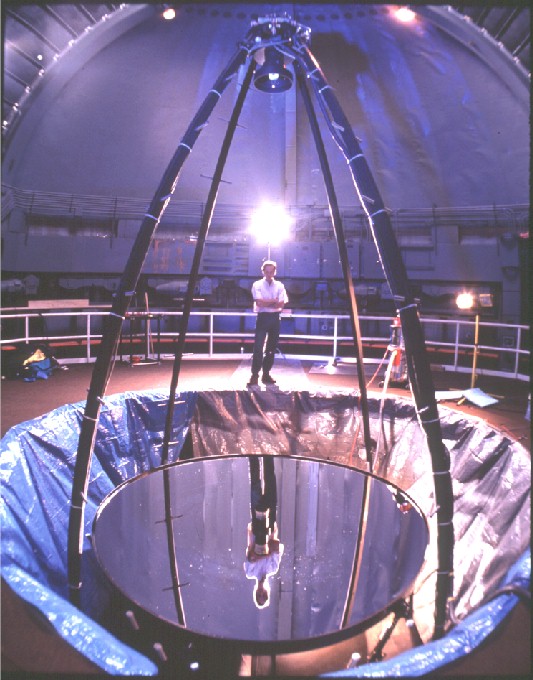

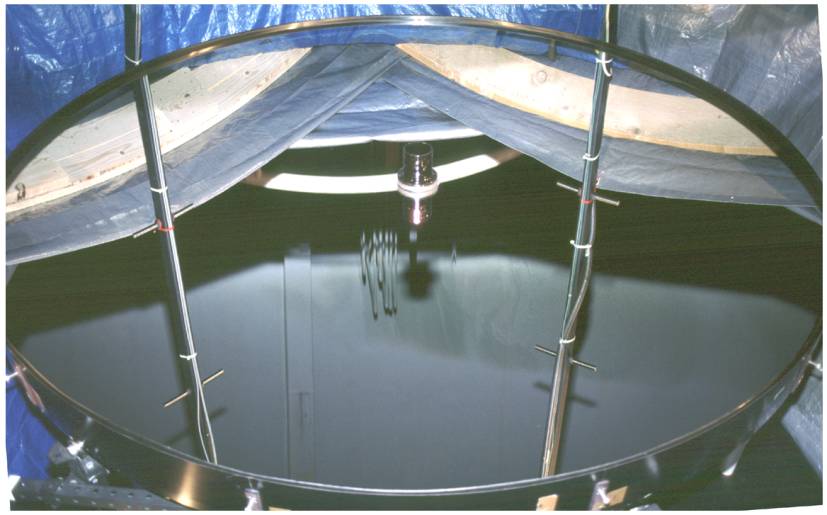
Close-up of the 3.0 m diameter NASA Liquid Mirror. The mirror is
spinning at an angular
velocity of 1.043 radians/second yielding a parabolic surface with a 4.511 m focal length
at the NODO location (g=9.8167 m/s2).
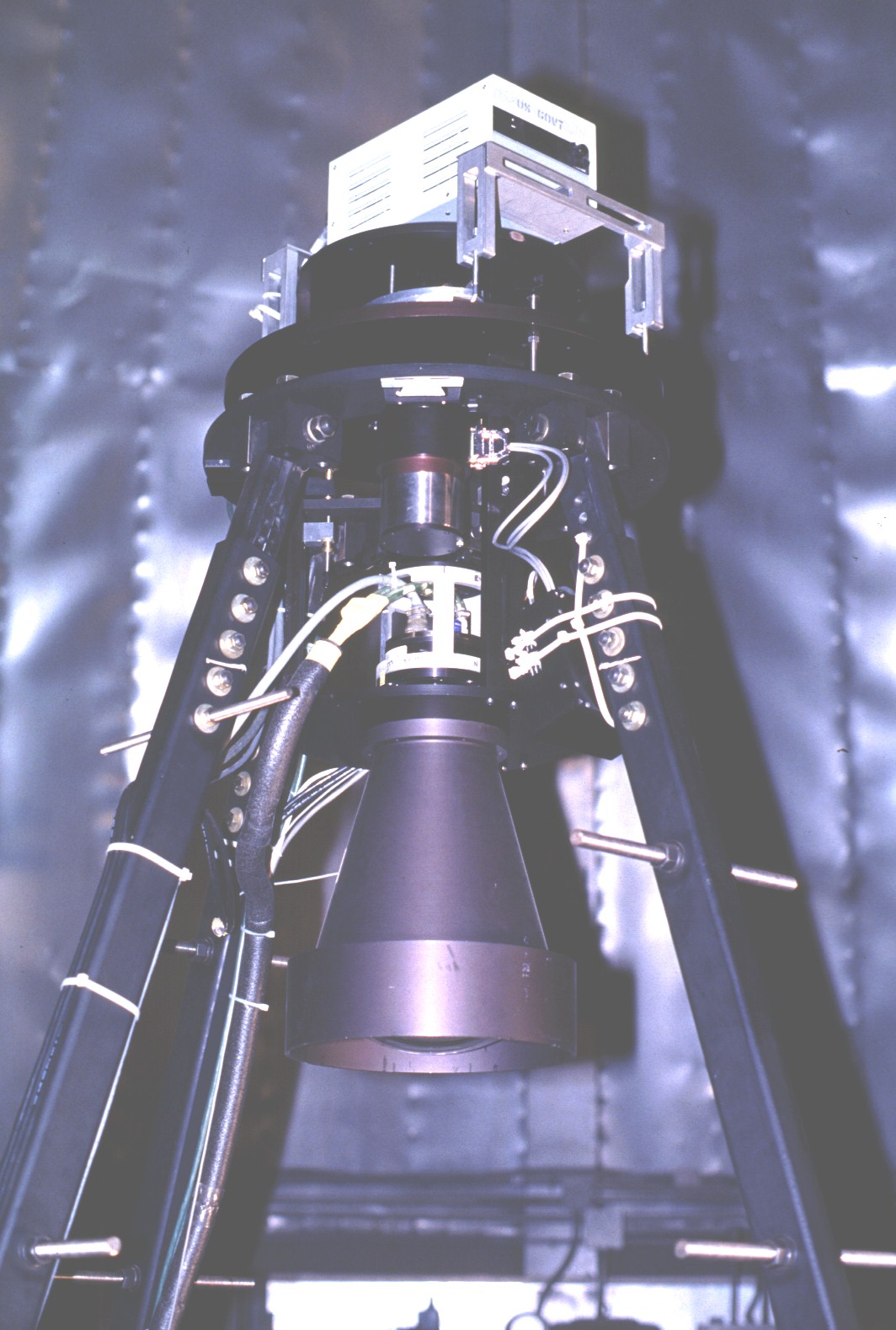
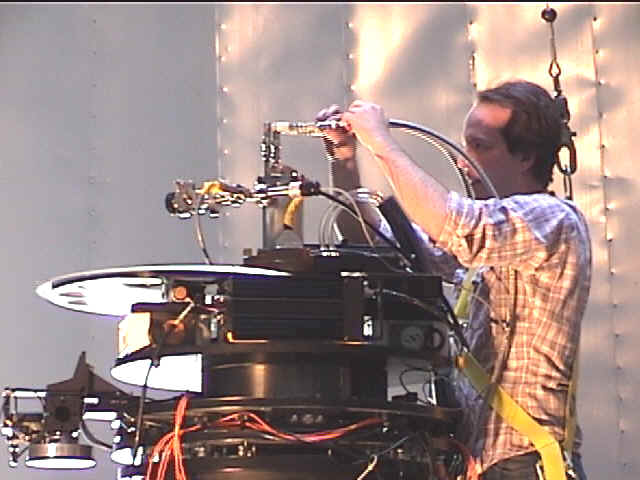
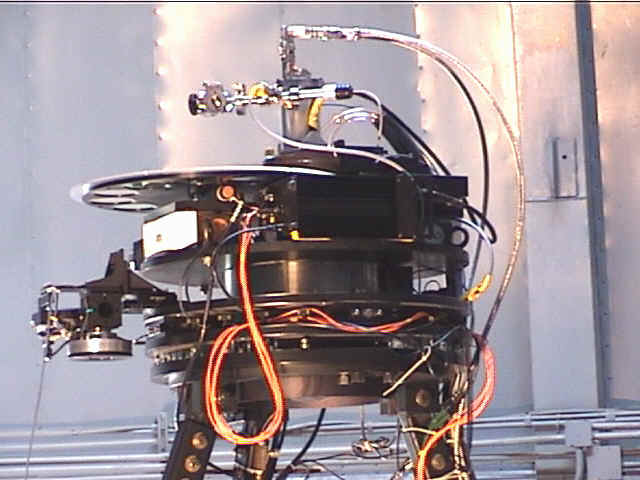
The prime focus assembly has recently been updated (Right Photos; 05/2001).
The upgraded assembly allows for remote detector/filter positioning as well as remote
lateral and rotational alignment. The new 2K CCD dewar is visible at top. The MCP
Intensified Video camera (orbital debris detector) is seen temporarily positioned at far
left of center.
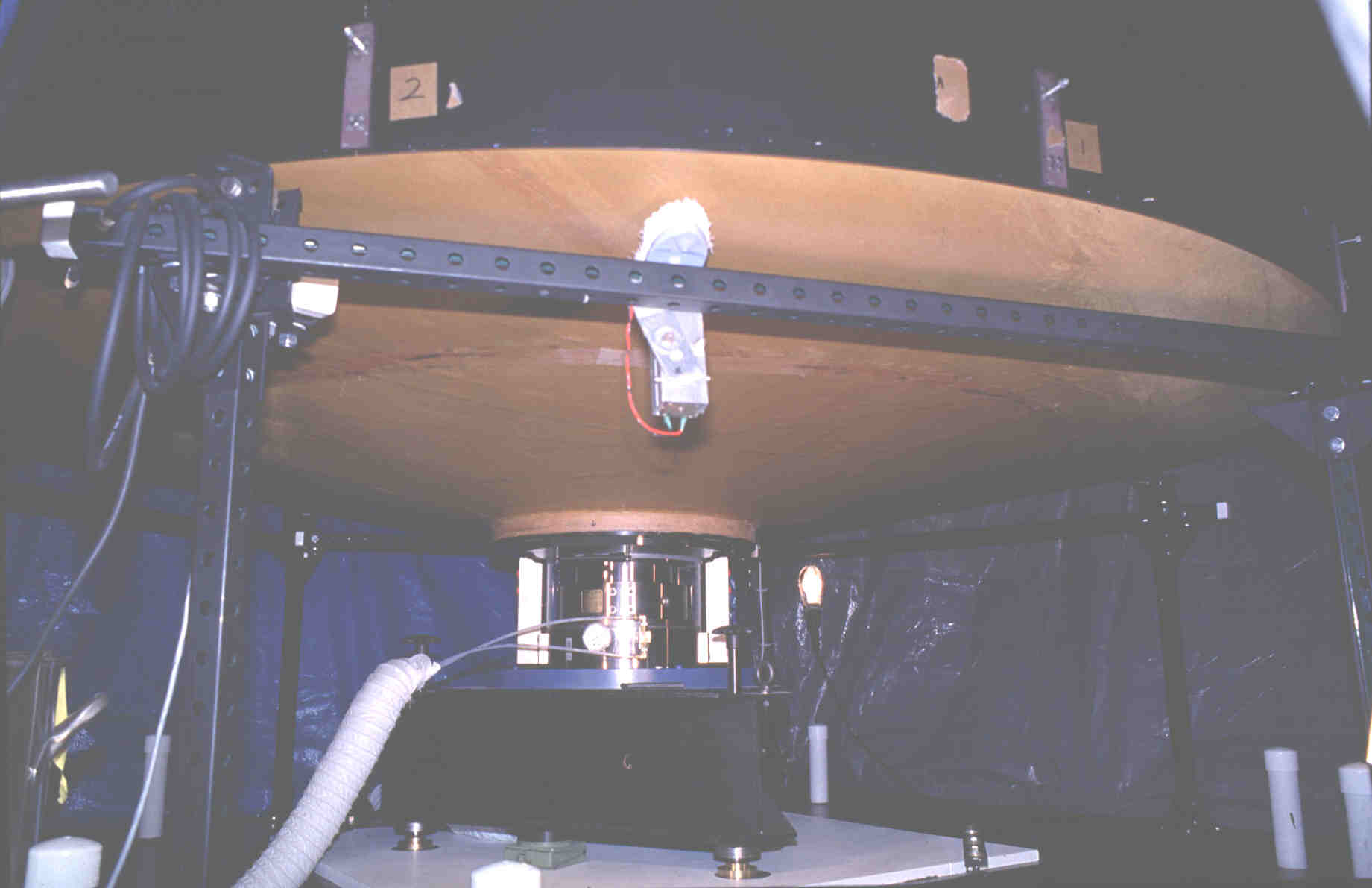
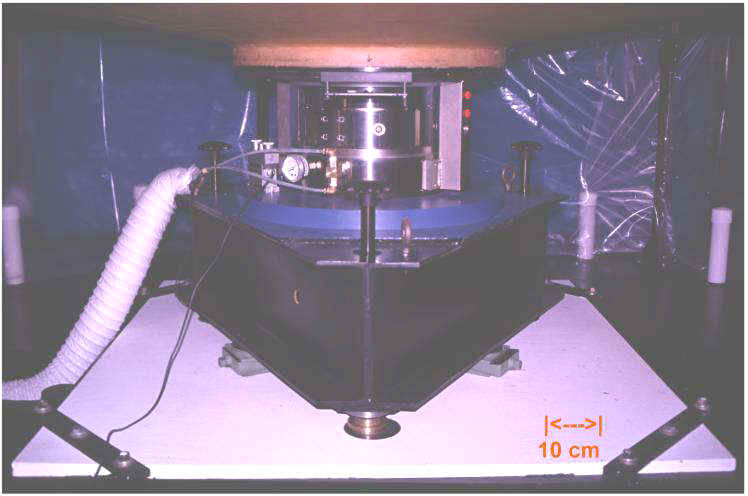
Two views of the underside of the liquid mirror - showing
the
Professional Instruments Air Bearing and the supporting base.
Background image of NGC 3395/96 acquired with the NASA-LMT